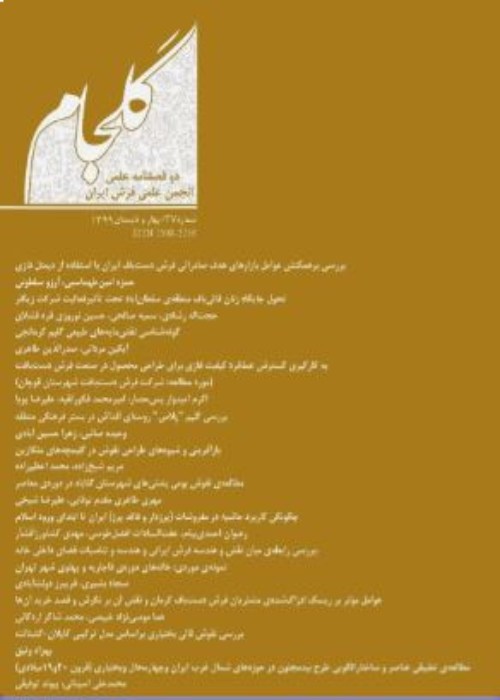Mihrabi Rugs Structure: Representation of Mosque Architecture in Rug Design
Author(s):
Abstract:
Various Persian traditional arts can be understood as different aspects of a unique concept. All of them represent substantial meanings which root in both Islamic and Iranian beliefs. The symbolic language of these arts and the ability of being expressed in various arts let artists to choose proper methods for their work. Rug and architecture are the most important Persian arts and two aspects of Persian symbolic design methods. This paper tries to focus on Mihrabi rugs as a direct reflection of one of architectural components of mosque architecture in rug design as a suitable carpet for praying time. The paper intends to show how ancient and Islamic architectural symbols affect symbolic expression of these rugs and how these different arts show a homogeneous idea in terms of their own capacities. This study uses a descriptive method and a comparative semiotic approach from historical and iconographical viewpoint and traces the mosque architecture elements and symbolic plant designs of Mihrabi rugs. Paradigmatic process shows some evidences regarding designers’ efforts to represent triple structure of ancient Mithraism altars in the form of mosque space structures and heaven on the limited space of rugs by replacing a triple division of floral patterns instead of architectural structure of mosques in a symbolic way, so the middle tree represents the ancient tree of life and recalls the main dome and two cypresses with their roots in ground and their heads up to the sky are the symbols of minarets. This fulfills artist’s objective to demonstrate such rugs as mosques and linkage between heaven and earth.
Keywords:
Architecture , Rug Design , Mihrabi rug , Cypress , Minaret
Language:
Persian
Published:
Quarterly Scientific-Research Goljaam, Volume:5 Issue: 14, 2009
Page:
9
https://magiran.com/p926190


